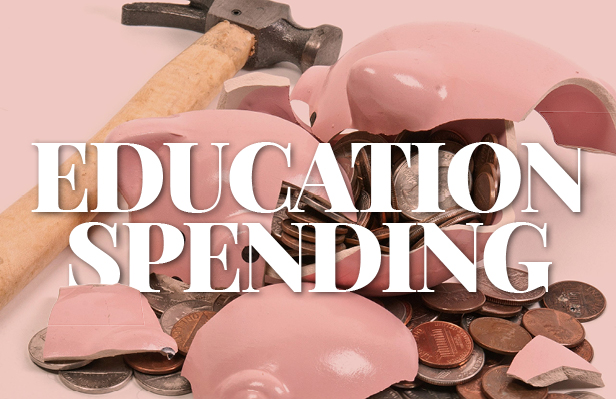Media

Five Ways Dollars Are Kept Out of Philadelphia Classrooms
The school district of Philadelphia saw a $1 billion increase in revenue over the past decade, even as enrollment declined. Yet many claim there isn’t enough funding for basic classrooms supplies. The question is: Where is the money going if not into the classroom?
1. Union Leader Salaries
The PFT forces teachers to pay more than $700 for the average teacher each year in dues (or more than $500 in fair share fees to keep their jobs). Teachers never see that money as it is deducted from their paycheck just like taxes.
At the same time, president of the American Federation of Teachers (AFT), Randi Weingarten, makes an astounding $550,000 a year off of teachers’ dues. In fact, AFT has more than 200 staffers making more than $100,000 in compensation, according to the Center for Union Facts.
Without such high dues, teachers could keep more of their salary and higher take home pay would help attract high quality teachers.
2. Political Spending
Philadelphia teacher union dues are being spent on political ads at the rate of $70,000 per minute. PFT ran two 30-second TV ads during an Eagles football game attacking Governor Corbett and select lawmakers. The cost of those two ads alone were $35,000 each, according to records filed with the FCC.
Nationally, the AFT spent more money on elections this year than ever before, including a gift of $500,000 from teachers’ union dues to fund attack ads via a “SuperPAC.” This money could buy countless classroom supplies the union claims Philadelphia schools lack. The teacher’s union’s actions indicate leadership is more concerned with playing politics than providing resources to struggling teachers and students.
3. Administrative Costs
The School District of Philadelphia has among the highest administrative costs in the state. In 2012-13, Philadelphia had a higher administrator to student ratio than the average Pennsylvania school district. In addition, the average administrator salary is $129,573, which ranks in the top 25 most generous school districts in Pennsylvania. These high overhead costs focus resources on adults instead of kids.
4. Health Care Costs
This past fall, for the first time, Philadelphia teachers were asked to contribute a portion of their salary towards health care premiums, a request made of teachers in every other Pennsylvania school district save one. With this change, approximately $54 million could go directly to classrooms if teachers begin to contribute just a percentage of their own health care costs. The School Reform Commission proposed teachers pay between 5 and 13 percent of their health care costs. That is about half of the 23 percent the average Pennsylvanian pays towards employer sponsored family coverage.
Former Governor Rendell, Philadelphia Mayor Nutter, and the Philadelphia Inquirer editorial board all agree with the necessity for reasonable concessions—but the PFT refuses to compromise. Without these savings, more teacher layoffs will be necessary.
5. PFT Health and Welfare Fund
Apart from health insurance, the school district contributes to the PFT Health and Welfare Fund. This entity, controlled by the PFT, provides supplemental benefits, such as dental and vision, along with a wide variety of other programs, such as term life insurance and an annual educational conference.
By simply ending the PFT’s monopoly control over these benefits, and selecting a high-quality benefit provider in the marketplace, the school district would save an estimated $22.4 million. Teachers will still receive these benefits with the savings would being directed back into the classroom for the benefit of students.